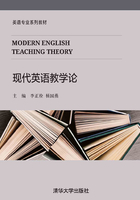
Chapter 2
A Historical Overview of English Language Teaching Methodology in China

The teaching of English began in China in the 19th century when foreign missionaries came to China. However, English was taught only in churches or church schools and it did not enter into the formal educational system until the early 20th century. But here in this chapter we only want to give a general overview of English language teaching after the founding of the People’s Republic of China. A glance at the language teaching in the past century and this century will give an interesting picture of how varied the interpretations of the best way to teach a foreign language have been. As disciplinary schools of thought—psychology, linguistics, and education, for example—have come and gone, so have language teaching methods waxed and waned in popularity. English language teaching in China undoubtedly has been greatly influenced by the changing winds and shifting sands in this field. For example, Grammar-Translation Method has been employed ever since the beginning of teaching of English; Direct Method in the 1960s; Oral Approach and Audio-Lingual Method in the 1970s; the Communicative Approach in the 1980s. These methods were tried out and found unsatisfactory. Each of them has enjoyed its advantages and disadvantages in language teaching in Chinese context. For example, Grammar-Translation Method, despite of its popularity, failed to train and develop students’ listening and speaking ability. After they have learned English for 12 years, students cannot use them in their everyday life. Other methods, such as Oral Approach, Communicative Approach, etc., have paid much attention to improve learners’ oral proficiency, but they have placed too high demand on English teachers’oral proficiency, which is only possessed by the native speakers. No doubt, English teachers in China cannot use it at all because of their poor listening and speaking ability. However, all these methods did influence China’s English teaching in everyaspect. What follows is a sketch of those changing methods of language teaching over the years in China.